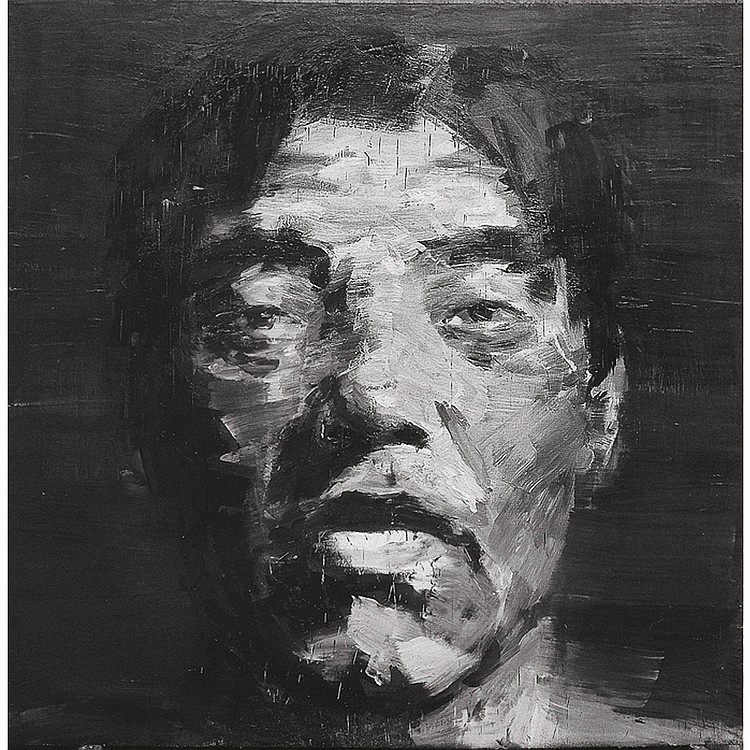Yan
Pei-Ming is a modern expressionist portrait painter whose works are
loose and representative of the roles that their subjects play in
society. Pei-Ming was born in 1960 in Shanghai, China. He did not attend
art school in China due to the highly competitive application
process, but he did take part in a program called the propaganda
studio. At age 20, Pei-Ming moved to Dijon, France in order to attend the
École
des Beaux-Arts. He later attended the Institut des Hautes Études en
Arts Plastiques in Paris, France.
He gained notoriety for his large format portraits of Mao Zedong. Pei-Ming
made a significant breakthrough for Chinese art in the Western
context because he was the first Chinese artist to exhibit at the
Louvre. Pei-Ming now teaches painting and drawing at his alma mater, École
des Beaux-Arts.
Fighting Spirit, Yan Pei-Ming, Oil on Canvas, 118 1/8 x 118 1/4 ", 2012
A
consistent theme in Pei-Ming's work is universality. He walks the line
between figuration and abstraction, perhaps to portray the universal
through the abstract and the unique through the representational. Pei-Ming states that “within my portraits, I am illustrating theories.”
Theories that are closely tied to his political views. Pei-Ming's
works are typically large and monochrome. He thwarts the power of
color to ensure that it does not detract from the essence of a moment
or feeling. Black and white are all Pei-Ming needs to convey a feeling. Pei-Ming is heavily influenced by Francisco Goya.
Self-Portrait as a Hooligan, Yan Pei-Ming, Oil on Canvas, 137.8 x 137.8 ", 2003
I
am drawn to Pei-Ming's paintings because of their dramatic weight and
expressive brushstrokes. Each painting feels heavy as if it is
bearing the weight of its subject's body and power. This is due to
the careful placement of values. Pei-Ming strives not to paint people
from history, but people who are alive now. I agree fully with this
decision because what is more relevant than our contemporaries?
Portrait painting is where I am presently stuck. The human head is of
fascination to me because it is the crown jewel of two billion years
of evolution. Inside of the head is where all perception, feeling,
thought, spirituality, and emotion exists. The combination of all of
the sensory information yields a visualization of the person's
identity in the form of a facial expression.
Grand Timonier, Yan Pei-Ming, Oil on Canvas, 98 3/8 x 98 3/8 ", 2000



No comments:
Post a Comment